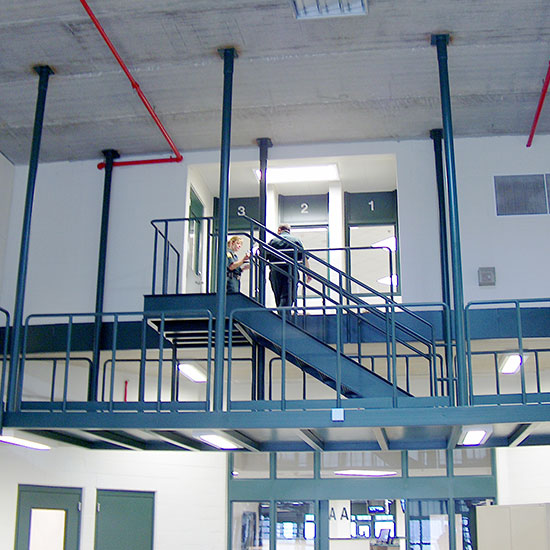Administration
History of the Vanderburgh County Sheriff’s Office
The office of the sheriff and the law enforcement, judicial and correctional functions he performs have existed for over one thousand years. The word “sheriff” is derived from the English title, “shire-reeve,” who was the king’s representative and most powerful English law authority figure. Even before 1000 A.D., the shire-reeve was responsible for the order of the land.
The office of sheriff is also the oldest law enforcement position in the United States. Indiana’s first constitution, adopted in 1816 when Indiana joined the Union, created the office of sheriff as an elected official in each county. Since then, the sheriff’s office has played a significant part in the history of the United States, Indiana, and Vanderburgh County.

Today, the term of office of sheriff is four years and continues until his successor is elected and qualified. The sheriff must reside within the county where he is elected and perform the following duties:
- The sheriff must arrest without process persons who commit an offense within his view, take them before a court of the county having jurisdiction, and detain them in custody until the cause of the arrest has been investigated.
- The sheriff must suppress breaches of the peace, calling the power of the county to his aid if necessary.
- The sheriff must pursue and jail all felons.
- The sheriff must execute all process directed to him by legal authority.
- The sheriff must serve all process directed to him from a court or the county executive.
- The sheriff must attend and preserve order in all courts of the county.
- The sheriff must take care of the county jail and prisoners there.
- The sheriff may take photographs, fingerprints, and other identification data of persons taken into custody for felonies or misdemeanors.
History of Vanderburgh County
Vanderburgh County was formed by combining land taken from established counties of Posey, Gibson, and Warrick. The county was named Vanderburgh in honor and memory of Judge Henry Vanderburgh. Judge Vanderburgh was one of the first territorial Judges of Indiana and was a member of the first Board of Trustees of Vincennes University. He was also a Revolutionary War veteran.
Judge Vanderburgh was the kinsman of General John Tipton, one of the most influential men in the legislature. General Tipton made his influence felt in the formation and naming of many of the counties in the State of Indiana. General Tipton greatly admired Judge Vanderburgh and submitted his name for approval of the legislature. The final act was sealed, making a new county and naming it Vanderburgh on January 7, 1818.
History of the Vanderburgh County Jail
The first jail in Vanderburgh County was built at a cost of $875 but was sold in 1829 for $19.37 ½. For the next two months, until another jail could be built, prisoners were kept in a tavern secured with a ball and chain. The second jail costs $350, it was two stories high and 18 x 32 feet. The foundation was stone and the floors were hewn timber covered with plank.

The third jail was built at the same time as the courthouse in 1855. This stone prison was two stories high, had 15 cells, and was capable of holding 40 prisoners. This was in use for almost 40 years until a jail and sheriff’s residence was occupied in 1891 on Fourth Street across from the old courthouse.
Built in 1890, the county’s fourth jail and second sheriff’s residence were built at a cost of $650,000. This castle-like structure had a stone exterior with step-gables, projecting turrets, crenelated roof -lines, simulated portcullis, and a central, rounded tower. Tunnels connected the jail to the courthouse. The building still stands today and remains a historical landmark in downtown Evansville.
Quick Links
Recent News
Three vehicle crash leads to Omvwi arrest
DATE: March 12th, 2024 SUBJECT: 3-vehicle crash leads to OMVWI Arrest RELEASE NUMBER: 2024-NR-0312 CONTACT: Major Matt Corn AUTHORITY: Sheriff Noah Robinson...
Murder Suspect Arrested in Vanderburgh County
DATE: March 7th, 2024 SUBJECT: Murder Suspect arrested in Vanderburgh County RELEASE NUMBER: 2022-NR-0307 CONTACT: Major Matt Corn AUTHORITY: Sheriff Noah Robinson On March...

